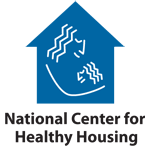|
|
Materials & Furnishings
We do not strictly control Google ad content. If you believe any Google ad is inappropriate, please email us directly here.
Sort results by: Date Added | Alphabetically - You will likely not be sleeping alone tonight.
- Healthier ways to bed down.
- What's under your kitchen sink, in your garage, in your bathroom, and on the shelves in your laundry room? Do any of the household products you use pose a potential health risk to you and your family? An online consumer guide from NIH's National Library of Medicine (NLM) provides easy-to-understand information on the potential health effects of more than 4,000 common household products.
- In the U.S. today we're far more likely to breathe some of the most debilitating compounds at home. How did things get this bad? A historical perspective.
- How to reduce your exposure to this common chemical.
- Formaldehyde is an important industrial chemical used to make other chemicals, building materials, and household products. Here's how to limit your exposure.
- Location, preventive measures and proper working conditions are essential for a safe and healthy home workshop.
- Yes and no.
- Dry-cleaning chemicals are often intolerable to chemically sensitive people and to some allergic and asthmatic people.
- With energy prices skyrocketing and the temperature continuing to spike, most homeowners dread receiving their energy bill in the height of summer. But what most homeowners don’t realize is that they could own a high performance home that requires much less energy.
- Find out how to tell whether a product or action is "green" or not.
- The chemicals we're exposed to indoors, how they may affect our health, and what the government is - and perhaps isn't - doing about it.
- A national population study reveals the prevalence of multiple chemical sensitivities.
- Going green may be easier than you think.
- Use the principles of separation, elimination, and ventilation to deal with pollutants originating from any source.
- The Healthy House Institute built a model demonstration house designed to optimize occupant health by minimizing indoor air pollution.
- Most people have heard that tight houses cause indoor air pollution. Actually, this represents a simplistic view of the problem. Tight construction is, in reality, part of the solution. This article explains why.
- The carpet industry has made substantial reductions in the levels of VOCs in carpet.
- LEED homes offer many benefits to home owners, including lower energy and water bills; reduced greenhouse gas emissions; increased comfort, less exposure to indoor pollutants such as mold, mildew and other indoor toxins, and lower maintenance costs.
- Dr. Arthur Weissman offers tips that can protect your health and surroundings — and just might save you money!
We do not strictly control Google ad content. If you believe any Google ad is inappropriate, please email us directly here.



Information provided by The Healthy House Institute is designed to support,
not to replace the relationship between patient/physician or other qualified
healthcare provider.
Education Partners
Ads, ad links, products and content on this page are not necessarily endorsed by these organizations.
|

We do not strictly control Google ad content. If you believe any Google ad is inappropriate, please email us directly here.
|








